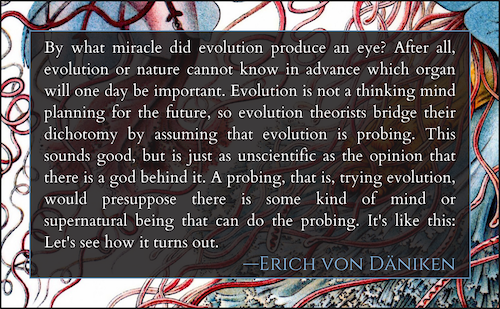He’s succeeding. He has this new series of videos titled “Beyond Darwin,” in which he tries to claim that fossils disprove evolution. It’s warmed-over Harun Yahya bullshit. You know, show a picture of a fossil, then show a picture of a modern animal, and declare, A-ha! There’s no difference between them!
It’s all perfectly ignorable nonsense, except he roused me from my slumber with this: SPIDERS DISPROVE EVOLUTION!
SPIDERS DISPROVE EVOLUTION!😱🕷️ pic.twitter.com/V4VUrH9ojB
— Eric Hovind (@erichovind) October 4, 2023
What a pitiful effort. Let’s scrutinize his example of failed evolution, shall we?
On the right, that’s a familiar beast: that’s a modern Araneus diadematus, or European garden spider, a big ol’ common orb weaver. It is most definitely a true spider.
On the left is a grainy photo of a fossil. It took me a moment to figure out what that is — you might look at it and notice that it seems to have only 6 legs. Actually, it has 8, but the 2nd pair is thin and attenuated. It also has a segmented abdomen, unlike most modern spiders, and there’s something going on with it’s mouthparts. It’s an arachnid all right, but it’s not a spider. That’s a fossil whip scorpion, Weygoldtina. Here’s a reconstruction that will clarify the details.
So here’s dumbass Hovind showing us a photo of two animals with radically different morphology, coming from two different distinct orders, the Araneae and the Amblypygi, and trying to tell us they look completely the same. Then he says Maybe evolution didn’t work on that one,
or it just evolved as high as it can go,
two excuses that aren’t valid evolutionary concepts. He riffs absurdly, pointing out that spiders still die, as if that’s something that wouldn’t happen under evolution.
Hey, Eric, does the fact that you’re still ignorant mean that education doesn’t exist? Do you think The Atlas of Creation is a biology textbook, rather than a religious scam written by a convicted con man? This approach didn’t work out so well for him, or your dad, you know.
I guess the rotting apple hasn’t fallen far from the dying corrupted tree, I guess.
Wait! I just watched the full video from Eric Hovind (the clip above is just an excerpt), and would you believe…he comes right out and cites The Atlas of Creation at the 21 minute mark and credits it for his ideas!
He is literally pulling out examples and photos from that discredited and blatantly silly book and quoting them as evidence that we have to move beyond Darwin
. (Here’s a hint, Eric: we have. Darwin didn’t have genetics or molecular biology as tools.)










